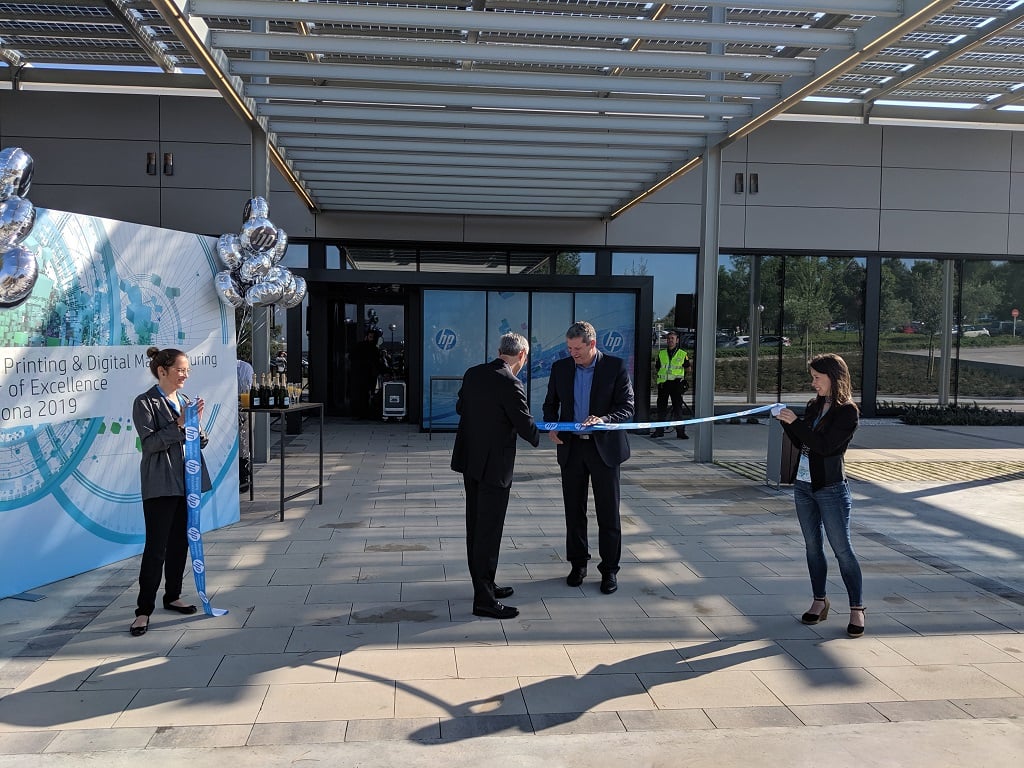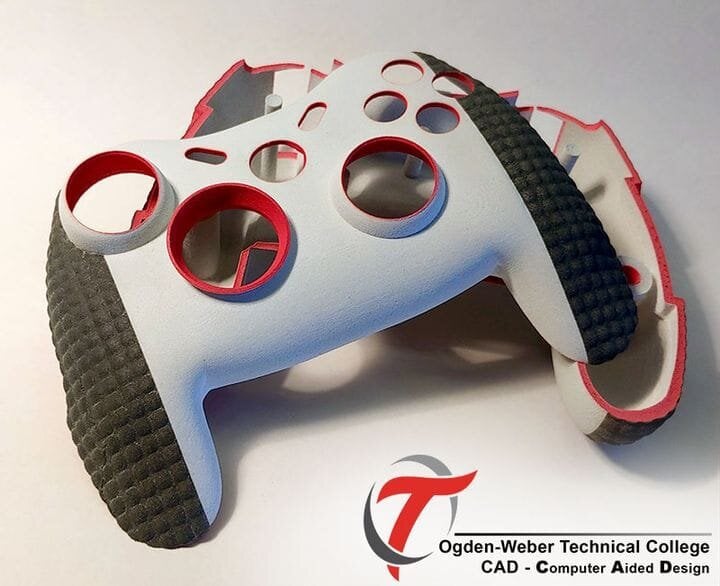![Christoph Schell and Ramon Pastor cut the ribbon [Image: Fabbaloo]](https://fabbaloo.com/wp-content/uploads/2020/05/hpcoe1_img_5eb095bf54c38.jpg)
The new HP 3D Printing and Digital Manufacturing Center of Excellence is, well, excellent.
This week, I was in Barcelona for the opening of the new Center. It’s impressive.
HP says it’s the largest 3D printing R&D center in the world; that may well be the case. At 152,000 square feet, it’s certainly among the largest, at least. An undisclosed number of engineers (“hundreds”) are based here, in Building 10 of HP’s Barcelona campus — where the company’s 3D printing business has its deepest roots. The Center is, of course, not just for them: it’s a collaborative center, meant for close work with partners and customers.
And so the opening festivities weren’t HP’s alone; executives from Siemens, Materialise, ZiggZagg, Avid Product Development, GKN Powder Metallurgy, and Volkswagen Group were on-site to share their experiences in working with Multi Jet Fusion and Metal Jet 3D printing technologies. Several other customers, partners, and potentially deepening relationships were also at the Center this week; we’ll likely hear more about just who they are and what will come of these relationships closer to formnext season. If at least one of my suspicions is correct about a partnership to come, there will be a good deal more to hear by then.
Labs at the Center are dedicated to MJF and Metal Jet, with various activities centered within each individual lab space. Walkthroughs of these labs afforded my first opportunities to watch the new Jet Fusion 5200 Series and the yet-to-be released Metal Jet systems in action.
We also saw an applications showcase, highlighting real-world use cases in automotive and transportation; medical; consumer goods; industrial; and inside-HP 3D printing. Among the products were familiar uses, like Wiivv’s partially 3D printed personalized flip flops (I have to confess I love my pair), and newer ones, like HP’s recently announced partnership with Smile Direct Club to 3D print molds for thermoformed dental aligners at volume.
![A full MJF tray of Smile Direct Club molds [Image: Fabbaloo]](https://fabbaloo.com/wp-content/uploads/2020/05/hpcoe3_img_5eb095c01eb8a.jpg)
The Center itself also houses significant workspace, and is very open concept. Conference rooms (all named for accomplished scientists who all happen to be women) dot the floor plan, and comfortable booths, tables, and sitting areas provide ample spaces to join colleagues and visitors in conversation. For a facility so focused on collaboration, the plans make a great deal of sense.
![[Image: Fabbaloo]](https://fabbaloo.com/wp-content/uploads/2020/05/hpcoe2_img_5eb095c0a12d7.jpg)
The building itself is also a testament to the future of architecture. Not in the 3D printed building sense (it’s not), but in a sustainable, customizable way. Formats can be maneuvered to best fit collaborative conversations, and a major focus on environmental friendliness is obvious. This was further underscored by both the obvious (a large photovoltaic roof over an outdoor patio area) and the stated (as Director of Product Stewardship John Ortiz noted an overarching focus on sustainability and the circular economy).
![Photovoltaic roof soaking up the Barcelona sunshine [Image: Fabbaloo]](https://fabbaloo.com/wp-content/uploads/2020/05/hpcoe4_img_5eb095c132b6b.jpg)
HP hosted a full program spread over a day and a half of meetings, and I also appreciated the chance to sit down for an interview with President of HP 3D Printing and Digital Manufacturing Christoph Schell as well as more casual chats with many of the execs and engineers from HP and its partners.
There’s much more to come so far as details and insights go — but for a first impression, it’s very clear: HP is in this game not just to play, and not (just) to win, but to captain.
Via HP 3D Printing and Digital Manufacturing











The debate over use of proprietary or open materials ecosystems is becoming a big topic in 3D printing.